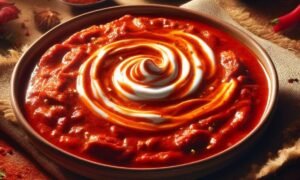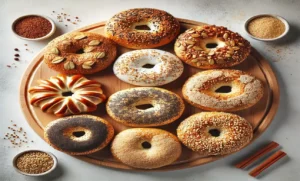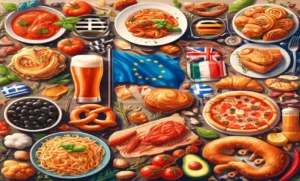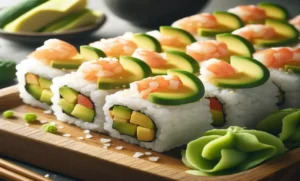Vacio and Bavette Steaks: A Flavor and Texture Showdown
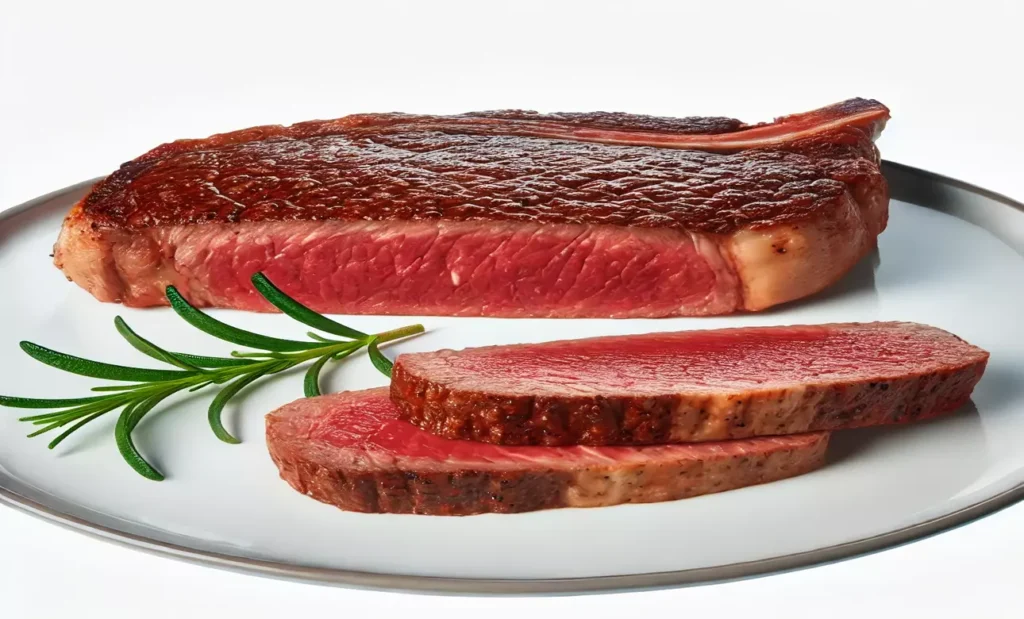
When it comes to steak, understanding the different cuts can make all the difference in your culinary adventures. Vacio and Bavette steaks are two delicious yet often misunderstood cuts of beef that offer rich flavors and a unique eating experience. This article will delve into the specifics of Vacio and Bavette steaks, helping you appreciate their qualities and how best to prepare them.
- What is Vacio Steak?
- What is Bavette Steak?
- Comparison of Vacio and Bavette Steaks
- Nutritional Value
- Cooking Techniques for Vacio Steak
- Cooking Techniques for Bavette Steak
- Best Seasonings and Marinades
- Popular Recipes
- Tips for Buying Vacio and Bavette Steaks
- Common Misconceptions
- Serving Suggestions
- FAQs on Vacio and Bavette Steaks
- Conclusion
What is Vacio Steak?
Vacio steak, pronounced vah-SEE-oh, is a beloved cut of beef in Argentina, often featured at traditional asados or Argentine barbecues. Renowned for its tenderness and rich flavor, vacio steak is derived from the primal section, yet it differs from typical flank steaks. This cut is well-marbled and cushioned by the cow’s belly, which protects it with layers of fat, giving it a unique texture and taste. The fat marbling ensures a juicy and flavorful experience, making it a favorite among Argentine grill masters. Traditionally, it is grilled whole over low, indirect heat and served with chimichurri sauce, enhancing its savory profile (The Spruce Eats) (The Spruce Eats) (Argentinian Steakhouse).
What is Bavette Steak?
Bavette steak, or flap steak, is a prized cut in French cuisine, renowned for its loose texture and intense beefy flavor. Originating from the bottom sirloin, this steak is often featured in French restaurants, commonly served as steak frites. Its rich marbling and versatile nature make it a favorite among chefs and home cooks.
Bavette steak is known for its robust flavor, which results from its well-exercised muscle, giving it a pronounced beefiness that stands out in various dishes. This cut can be grilled, pan-seared, or slow-cooked, and it adapts well to different seasonings and marinades, enhancing its taste profile. Its affordability and adaptability have contributed to its growing popularity, making it a go-to choice for those looking to enjoy a flavorful and tender steak without breaking the bank (Own The Grill) (https://ownthegrill.com/) (OmahaSteaks.com).
Comparison of Vacio and Bavette Steaks
Both vacio and bavette steaks share a similar loose texture and robust flavor due to their origin in the cow’s abdomen. Yet, they differ significantly in preparation and cultural significance. Vacio, a staple in Argentina, is typically grilled whole over low, indirect heat, often as part of a traditional asado. This method enhances its rich, beefy flavor and tender texture. Vacio steaks are usually served with minimal seasoning, complemented by chimichurri sauce, reflecting Argentine culinary traditions (The Spruce Eats) (The Spruce Eats) (Argentinian Steakhouse).
In contrast, bavette steak, or flap steak, is a favorite in French cuisine. It is often marinated to enhance its flavor and grilled or pan-seared. Bavette is frequently featured in French restaurants, served as steak frites, highlighting its versatility and rich marbling. This cut benefits from quick, high-heat cooking methods that preserve its tenderness and intense beefy flavor, making it a beloved choice for a variety of dishes (Better Grills) (Better Grills) (Food Fire Friends).
Nutritional Value
Both vacio and bavette steaks are nutrient-dense, providing essential nutrients for overall health. They are excellent sources of high-quality protein vital for muscle maintenance and repair. Additionally, these steaks are rich in iron, aiding in oxygen transport throughout the body, and zinc, which supports immune function and wound healing. Vitamin B12 is also abundant in both cuts, pivotal in nerve health and red blood cell production. Although vacio and bavette steaks have a slightly higher fat content, this enhances their flavor and juiciness when appropriately cooked (Better Grills) (Better Grills) (Food Fire Friends).
Cooking Techniques for Vacio Steak
Traditionally, vacio steak is cooked asado-style, a popular method in Argentina that involves slow grilling over indirect heat. This technique allows the fat to render slowly, infusing the meat with a rich, smoky flavor and ensuring a tender texture. The key to this method is patience, as the slow cooking process brings out the best in the vacio cut (The Spruce Eats) (The Spruce Eats).
For a quicker preparation, you can pan-sear vacio steak. Begin by searing the steak over high heat to achieve a flavorful crust on the outside, then reduce the heat to cook it through more gently. This method ensures the meat remains juicy while developing a robust, caramelized exterior (Argentinian Steakhouse) (Argentinian Steakhouse).
Cooking Techniques for Bavette Steak
Bavette steak excels when marinated and quickly grilled or pan-seared, bringing out its robust flavor and tender texture. A popular method involves marinating the steak in olive oil, red wine, garlic, and thyme for several hours to enhance its taste and tenderness. After marination, the steak is cooked on high heat, achieving a crispy crust while keeping the inside juicy and tender. This high-heat searing technique locks in the flavors and creates a delightful contrast between the charred exterior and the succulent interior (Own The Grill) (https://ownthegrill.com/).
Another favored technique is reverse searing, which involves slowly cooking the steak at a low temperature until it reaches the desired doneness, then searing it on high heat to form a caramelized crust. This method ensures even cooking and maximizes flavor (OmahaSteaks.com) (OmahaSteaks.com) (Food Fire Friends).
Best Seasonings and Marinades
For vacio steak, simple seasonings like salt and pepper are often enough, allowing the meat’s natural flavors to shine. Chimichurri sauce, made with parsley, garlic, lemon, and olive oil, is a traditional Argentine accompaniment.
Bavette steak benefits from bold marinades. A blend of olive oil, garlic, thyme, and red wine can enhance flavor. At the same time, simple seasoning with kosher salt and freshly ground black pepper can also work wonders (The Spruce Eats) (https://ownthegrill.com/).
Popular Recipes
- Vacio Steak with Chimichurri: Grill the steak over medium heat until medium-rare. Serve with chimichurri sauce on the side.
- Bavette Steak with Garlic and Herbs: Marinate the steak in olive oil, garlic, and thyme for at least an hour. Grill or pan-sear until medium-rare and serve with a fresh herb salad (The Spruce Eats) (https://ownthegrill.com/).
Tips for Buying Vacio and Bavette Steaks
When selecting vacio or bavette steaks, choosing cuts with good marbling and deep red color is crucial, indicating freshness and quality. Marbling ensures the steaks remain juicy and flavorful during cooking. Since these cuts may not always be available at every supermarket, visit local butchers or explore online meat markets where these specialty cuts are more common. Don’t hesitate to ask your butcher to order these cuts if they are not readily available (Food Fire Friends).
Local butchers often have a better selection of less common cuts. They can provide insights into the best ways to prepare them. Additionally, online meat markets offer convenience and various options, often delivering high-quality vacio and bavette steaks right to your doorstep (Better Grills). This approach ensures you get the best quality meat for your culinary adventures.
Common Misconceptions
A common myth is that vacio and bavette steaks are the same as flank or skirt steaks. While they share some similarities, such as being cut from the cow’s abdominal area, they are distinct cuts with unique textures and flavors. Vacio, for instance, comes from the area under the loin and is cushioned by layers of fat, giving it a richer flavor and tenderness. On the other hand, Bavette is a bottom sirloin cut known for its loose texture and intense beefy taste (The Spruce Eats).
Another misconception is that these cuts are tough. While they can be chewier due to their grain, proper cooking techniques can make Vacio and Bavette incredibly tender and flavorful. Slow grilling, marinating, and reverse searing enhance their tenderness (Better Grills) (Food Fire Friends). Understanding these nuances helps in appreciating the unique qualities each cut offers.
Serving Suggestions
Vacio steak pairs wonderfully with grilled vegetables, roasted potatoes, and a side of chimichurri sauce, enhancing its rich, smoky flavor. Combining these sides complements the steak’s tenderness and enhances its Argentinean flair (The Spruce Eats).
For bavette steak, classic serving suggestions include steak frites, which pair the steak with crispy French fries, or a fresh green salad for a lighter option. Bavette also shines in a hearty steak sandwich, where its robust flavor and tender texture make for a delicious, satisfying meal (https://ownthegrill.com/) (Food Fire Friends). These accompaniments highlight the versatility and rich taste of bavette steak.
FAQs on Vacio and Bavette Steaks
What is the difference between vacio and bavette steak
Vacio is popular in Argentina, while Bavette is a favorite in France. Both have a loose texture and rich flavor but differ in traditional preparation methods.
How should I cook vacio steak?
Grill it slowly over indirect heat or pan-sear it, starting with high heat and finishing on low.
What is the best way to cook bavette steak?
Marinate it and grill or pan-sear over high heat for a tender, flavorful result.
Are Vacio and Bavette steaks healthy?
They are rich in protein, iron, zinc, and vitamin B12.
Can I use vacio or bavette steak for fajitas?
Absolutely! Both cuts work well in fajitas, stir-fries, and other dishes.
Where can I buy Vacio or Bavette steak?
Check local butchers or online meat markets.
How do I season Vacio steak?
Simple seasonings like salt and pepper or a chimichurri sauce work well.
What marinade is best for bavette steak?
A blend of olive oil, garlic, thyme, and red wine is excellent for marinating Bavette.
What is the texture of bavette steak?
It has a slightly grainy, chewy texture with a robust, beefy flavor.
Can I cook bavette steak medium-well?
It’s best cooked to medium-rare to maintain tenderness and juiciness.
Conclusion
Both vacio and bavette steaks offer unique flavors and textures that can elevate your steak experience. Understanding their origins, cooking techniques, and best practices will help you make the most of these delicious cuts. Whether grilling for a summer barbecue or preparing a special meal, vacio, and Bavette steaks are worth exploring.

